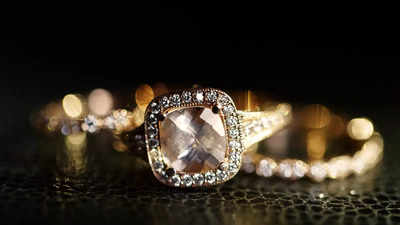Exploring Diamond Shapes and Cuts: A Thorough Manual for Lab Diamonds
With regards to lab-grown diamonds, understanding the variety of diamond shapes and cuts can make a significant contrast in the beauty and value of the final item. Lab diamonds offer the same physical and chemical properties as natural diamonds, yet their ability to be customized as far as shape and cut allows for a degree of personalization that is unparalleled. This guide will dive into the critical aspects of diamond shapes and cuts, providing you with the knowledge expected to make an informed decision while selecting lab diamonds.
Understanding Diamond Shapes
Diamond shapes allude to the mathematical outline of a diamond, which can greatly influence its appearance. Each shape has interesting characteristics and can affect how a diamond mirrors light. Here are the absolute most popular diamond shapes available in lab-grown diamonds:
1. Round Brilliant Cut
The Round Brilliant Cut is the most classic and sought-after diamond shape. Its plan features 58 facets, which maximize the diamond’s brilliance and sparkle. This shape is known for its immortal appeal and is often picked for engagement rings and other fine gems.
2. Princess Cut
The Princess Cut is a cutting edge and stylish shape, characterized by its square or rectangular outline with pointed corners. It is intended to capture the same brilliance as the Round Brilliant Cut, however with a more contemporary look. The Princess Cut is a fantastic decision for the people who incline toward a mathematical esthetic.
3. Emerald Cut
The Emerald Cut is known for its rectangular shape and ventured facets, which create an interesting “hall of mirrors” impact. This cut emphasizes the clarity of the diamond, making it a favored decision for the people who value transparency and elegance.
4. Asscher Cut
The Asscher Cut is similar to the Emerald Cut yet features a square shape with a higher crown and a more profound pavilion. It is prestigious for its vintage charm and classic style, offering a sophisticated and glamorous appearance.
5. Oval Cut
The Oval Cut is an elongated rendition of the Round Brilliant Cut, offering a special mix of brilliance and elongation. This shape can make fingers appear longer and is often picked for its distinctive and elegant look.
6. Marquise Cut
The Marquise Cut is characterized by its elongated, boat-like shape with pointed closes. This cut maximizes the carat weight of the diamond, making it appear larger than other shapes of the same weight. It is a striking and dramatic decision for those seeking a strong statement piece.
7. Pear Cut
The Pear Cut, also known as the teardrop shape, combines the features of the Round Brilliant Cut and Marquise Cut. It offers an extraordinary and graceful outline, making it a popular decision for earrings and pendants.
8. Radiant Cut
The Radiant Cut features a rectangular or square shape with managed corners and brilliant facets. This cut combines the elegance of the Emerald Cut with the sparkle of the Round Brilliant Cut, resulting in a dazzling and versatile diamond shape.
9. Heart Cut
The Heart Cut is a romantic and representative shape that addresses love and affection. It requires an elevated degree of craftsmanship to achieve its distinctive heart shape, making it a special and meaningful decision for gems.
Selecting the Right Diamond Cut
The cut of a diamond alludes to how well it has been shaped and faceted, which straightforwardly impacts its brilliance and overall appearance. A very much cut diamond will mirror light optimally and show a captivating sparkle. Here are a few critical factors to consider while selecting the cut of a lab-grown diamond:
1. Cut Quality
The quality of a diamond’s cut is assessed based on several factors, including balance, proportions, and polish. A top notch cut will enhance the diamond’s brilliance and fire, making it more visually appealing. While choosing a lab-grown diamond, prioritize cuts that display brilliant proportions and balance.
2. Proportions
The proportions of a diamond allude to the relationship between its various dimensions, including the table size, profundity, and support thickness. Proportional diamonds will have a balanced and harmonious appearance, contributing to their overall brilliance.
3. Evenness
Evenness plays a crucial job in determining the visual appeal of a diamond. Well-symmetrical lab diamonds will have equitably spaced facets and consistent angles, resulting in a more uniform and attractive sparkle.
4. Polish
The polish of a diamond alludes to the perfection of its surface. A great polish will minimize any surface blemishes and enhance the diamond’s intelligent qualities. Guarantee that the lab-grown diamond you select has been polished to an exclusive requirement.
5. Choosing a Cut for Your Style
Different diamond cuts offer varying degrees of brilliance and visual impacts. Consider your personal style and inclinations while selecting a cut. For example, on the off chance that you favor a traditional and classic look, the Round Brilliant Cut may be ideal. On the off chance that you want something more contemporary, the Princess Cut or Oval Cut may be more suitable.
Combining Shapes and Cuts
Lab-grown diamonds offer the adaptability to combine various shapes and cuts, allowing for perpetual customization choices. Whether you are designing a tailor made engagement ring or an interesting piece of gems, consider experimenting with various shapes and cuts to create a unique masterpiece.
Conclusion
All in all, understanding the intricacies of diamond shapes and cuts is essential for selecting the ideal lab-grown diamond. Each shape and cut offers its own novel characteristics and visual appeal, allowing you to pick a diamond that impeccably suits your style and inclinations. By considering factors like cut quality, proportions, evenness, and polish, you can guarantee that your lab-grown diamond will be a stunning and immortal addition to your gems assortment.

